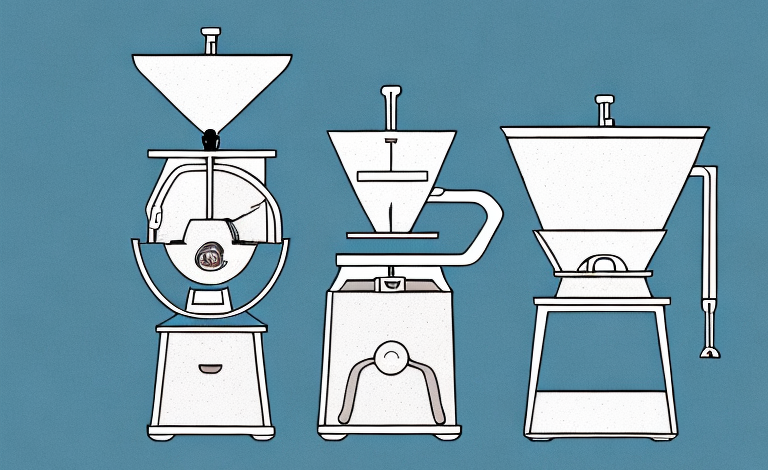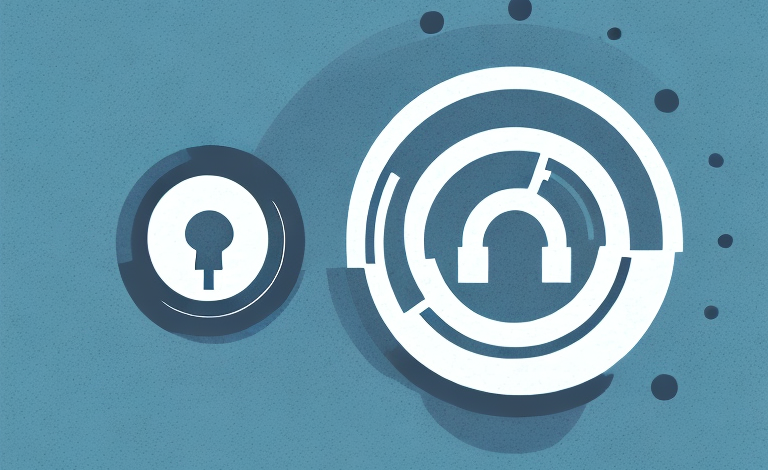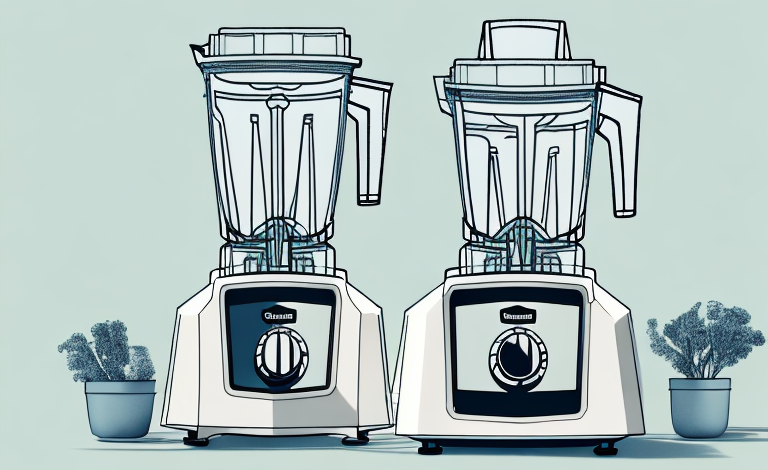Many coffee enthusiasts argue that the key to achieving a strong cup of drip coffee is by using a finer grind. But is this really true? In this article, we will explore the relationship between the fineness of your coffee grind and the strength of your drip coffee. We’ll cover everything from the basics of coffee extraction to expert opinions on the matter, and even provide tips and tricks for brewing a perfect pot. So, grab a cup of coffee and get ready to learn!
Understanding the basics of coffee extraction
Before we delve into the impact of grind size on coffee flavor, it’s important to understand the basics of coffee extraction. When you brew coffee, you’re essentially extracting the soluble compounds and oils from the beans. These compounds are what give coffee its flavor and aroma. The optimal extraction time depends on a variety of factors, such as grind size, water temperature, and brewing method.
One important factor to consider when it comes to coffee extraction is the coffee-to-water ratio. The ideal ratio is generally considered to be 1:16, which means one part coffee to 16 parts water. This ratio ensures that the coffee is not too weak or too strong, and that the flavors are properly extracted. However, it’s important to note that personal preference plays a role in determining the ideal ratio for each individual.
The impact of grind size on coffee flavor
Grind size plays a significant role in coffee extraction, as it determines the surface area of the coffee that comes into contact with water. A finer grind size means more surface area, which can lead to a faster extraction time and a stronger cup of coffee. However, it’s important to note that using a too-fine grind can actually lead to over-extraction, resulting in bitter or burnt flavors. On the other hand, a coarser grind will result in a longer extraction time and a weaker cup of coffee.
It’s also worth noting that different brewing methods require different grind sizes. For example, a French press requires a coarser grind to prevent the coffee from passing through the filter, while an espresso machine requires a very fine grind to ensure proper extraction in a short amount of time. Understanding the appropriate grind size for your preferred brewing method can greatly enhance the flavor of your coffee.
How to achieve the perfect grind for drip coffee
The perfect grind size for drip coffee will depend on your individual preferences and brewing method. For a standard drip coffee maker, a medium-fine grind is usually recommended. However, it’s always best to experiment with different grind sizes to find what works best for you. A good starting point is to use a medium grind size and adjust from there.
It’s important to note that the type of coffee beans you use can also affect the grind size. For example, darker roasts may require a slightly coarser grind to prevent over-extraction and bitterness. On the other hand, lighter roasts may need a finer grind to extract enough flavor. Additionally, the age of the beans can also impact the grind size needed. Fresher beans may require a coarser grind, while older beans may need a finer grind to extract enough flavor.
Fine vs coarse grind: Which one is better for drip coffee?
As previously mentioned, a finer grind size can result in a stronger cup of drip coffee. However, a coarser grind can also be beneficial, as it allows for more water to pass through the grounds and can result in a smoother cup. Ultimately, it will depend on your individual preferences.
Another factor to consider when choosing between a fine or coarse grind is the type of coffee beans you are using. Some beans may be more suited to a finer grind, while others may work better with a coarser grind. It’s important to experiment with different grind sizes to find the perfect match for your beans.
Additionally, the brewing method you use can also impact the grind size you choose. For example, if you are using a French press, a coarser grind may be more appropriate to prevent the coffee from becoming too bitter. On the other hand, if you are using a drip coffee maker with a paper filter, a finer grind may be necessary to ensure the water passes through the filter and extracts the full flavor of the beans.
The role of water temperature in drip coffee brewing
Water temperature is another important factor in coffee extraction. The optimal temperature for drip coffee is between 195-205°F. If the water is too hot, it can result in over-extraction and a burnt taste. If it’s too cold, it can result in under-extraction and a weak cup of coffee.
It’s important to note that the temperature of the water can also affect the brewing time. If the water is too hot, the coffee may brew too quickly, resulting in a weaker flavor. On the other hand, if the water is too cold, the brewing process may take longer, resulting in a stronger, more bitter taste. It’s important to find the right balance of temperature and brewing time to achieve the perfect cup of drip coffee.
The importance of using high-quality coffee beans for an optimal cup of drip coffee
The quality of the coffee beans used can also have a huge impact on the strength and flavor of your drip coffee. It’s important to use freshly roasted, high-quality beans for an optimal cup. Investing in high-quality beans can make a significant difference in the taste of your coffee.
Additionally, the origin of the coffee beans can also affect the taste of your drip coffee. Different regions produce coffee beans with distinct flavors and aromas. For example, beans from South America tend to have a nutty and chocolatey taste, while beans from Africa have a fruity and floral flavor. Experimenting with different origins can add a new dimension to your coffee experience and help you discover your preferred taste profile.
Factors that can affect the strength and taste of your drip coffee
Aside from grind size and water temperature, there are other factors that can affect the strength and taste of your drip coffee. These include the brewing time, water quality, and the coffee-to-water ratio. It’s important to play around with these factors to find the perfect balance for your taste preferences.
Brewing time is a crucial factor in determining the strength and taste of your drip coffee. If you brew your coffee for too long, it can become bitter and over-extracted. On the other hand, if you don’t brew it long enough, it may taste weak and under-extracted. The ideal brewing time can vary depending on the type of coffee and your personal taste preferences. Experiment with different brewing times to find the perfect balance.
Tips and tricks to make your drip coffee taste stronger and bolder
If you prefer a stronger and bolder cup of drip coffee, there are a few tips and tricks you can try. One is to use a darker roast of coffee beans, which tend to have a bolder flavor profile. Another is to increase the coffee-to-water ratio, or use a smaller amount of water for brewing. Finally, you can experiment with different brewing methods, such as French press or pour-over, which can result in a stronger cup of coffee.
Additionally, the freshness of your coffee beans can also impact the strength and boldness of your drip coffee. It’s best to use freshly roasted beans and grind them just before brewing to ensure maximum flavor extraction. Storing your beans in an airtight container away from light and heat can also help preserve their freshness. Another tip is to preheat your coffee maker and use hot water to brew, as this can help extract more flavor from the coffee grounds.
Common mistakes to avoid when brewing drip coffee at home
There are a few common mistakes that people make when brewing drip coffee at home. These include using stale coffee beans, not cleaning the coffee maker regularly, and using the wrong grind size or water temperature. To avoid these mistakes, make sure to use fresh, high-quality beans, clean your coffee maker regularly, and experiment with the right grind size and water temperature.
Another common mistake to avoid when brewing drip coffee at home is using too much or too little coffee grounds. Using too much coffee can result in a bitter taste, while using too little can result in a weak and watery brew. It’s important to measure out the correct amount of coffee grounds based on the amount of water you are using. A general rule of thumb is to use one to two tablespoons of coffee grounds for every six ounces of water.
Expert opinions on the relationship between grind size and coffee strength
Experts have varying opinions on the relationship between grind size and coffee strength. Some argue that a finer grind results in a stronger cup of coffee, while others believe that a coarser grind can result in a smoother and more flavorful cup. It ultimately comes down to personal preference and experimentation.
However, it is important to note that the type of coffee brewing method being used can also impact the relationship between grind size and coffee strength. For example, a French press typically requires a coarser grind to prevent the coffee from becoming too bitter, while an espresso machine requires a very fine grind to extract the full flavor and strength of the coffee. Therefore, it is important to consider both the brewing method and personal preference when determining the optimal grind size for a perfect cup of coffee.
Comparing different brewing methods to achieve a strong cup of coffee
There are many different brewing methods that can result in a strong cup of coffee, aside from drip coffee. French press, pour-over, and espresso are just a few examples. Each method has its own unique strengths and weaknesses, and it’s important to experiment with different methods to find the right one for your taste preferences.
The science behind achieving a consistent grind for your drip coffee
A consistent grind size is key to achieving a quality cup of drip coffee. This is because a consistent grind size ensures that all of the coffee is being extracted at the same rate. Inconsistent grinds can result in over-extraction or under-extraction. Investing in a high-quality grinder and calibrating it regularly can help ensure a consistent grind size.
How to adjust your grinder settings for different types of coffee brewing
It’s important to adjust your grinder settings based on the type of coffee brewing method you’re using. For example, a coarser grind is recommended for French press, while a finer grind is recommended for espresso. Experimenting with different grind sizes for different brewing methods can help you achieve the perfect cup.
Experimenting with different grind sizes to find your ideal cup of drip coffee
At the end of the day, the key to achieving an ideal cup of drip coffee is through experimentation. Try different grind sizes, water temperatures, and brewing methods until you find the perfect balance for your individual taste preferences. With a little patience and practice, you can become a coffee brewing pro!



